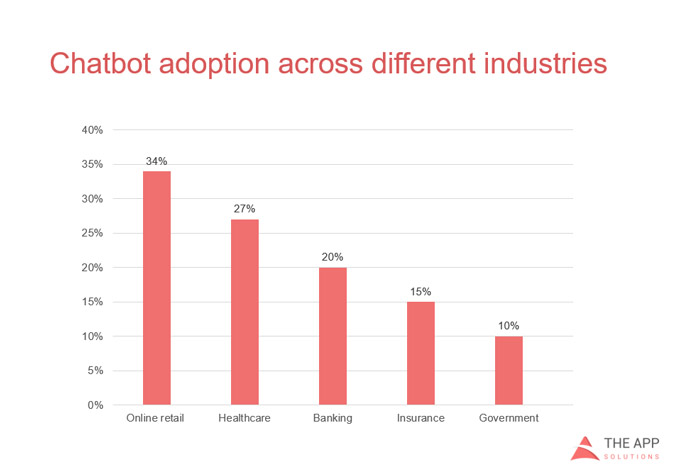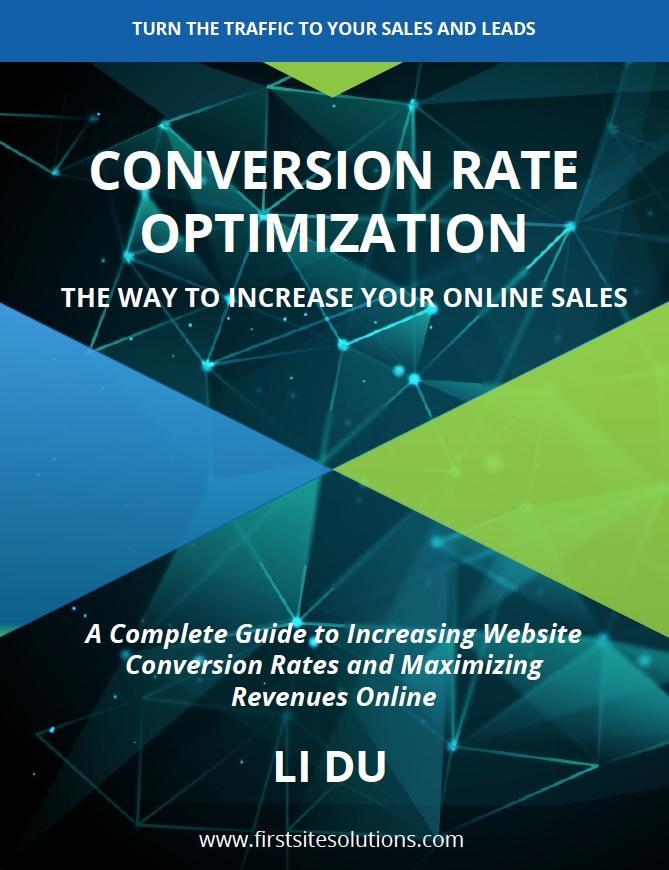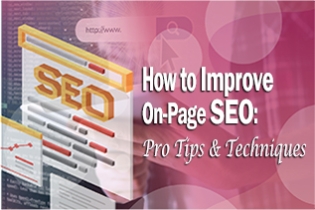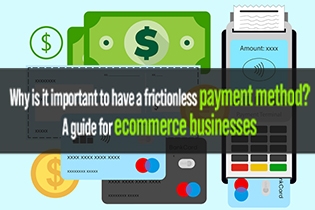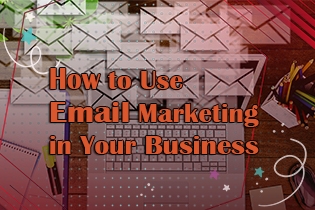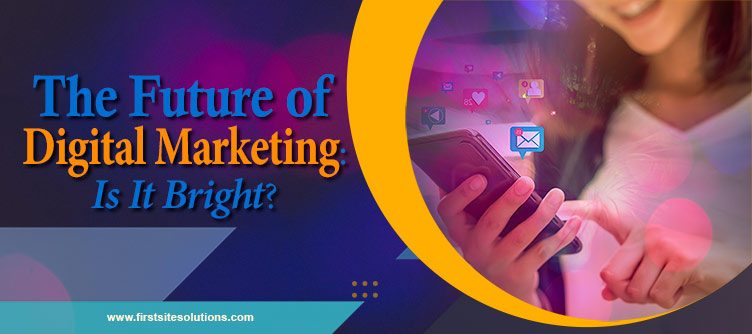
Did your business survive the pandemic?
If not, we send our heartfelt condolences and advise you to come out of the grief bubble this instant! If it makes you feel any better, realize you are not alone.
The pandemic marched into our lives and took control of our financial prospects before we could strain our savings a little bit.
But, the pandemic also paved way for the future to grow. From online shopping portals to innumerable streaming websites, there were a host of evergreen technological fluctuations in the last couple of years alone.
Many businesses learnt how to stay afloat by venturing into the world of digital marketing – even if they were skeptical about it before. Digital marketing has proven back and forth that it can help revive a sinking business – but only if the methods applied are in the favor of the company’s progression.
We have been analyzing a few digital trends that might be here to stay for the inevitable future in the marketplace. Read below to get a whiff of the top 4 trends that can help to bring the economy in order and save your business too!
1. Chatbot Optimization
A waiting consumer is a fleeting customer – this is not what I’m saying but only about 82% of consumers worldwide! As we move ahead into the phase of instant gratification, appeasing customers with one-on-one human interaction is yesterday’s news.
Don’t get me wrong – people thrive on one-on-one human interactions, but it isn’t scalable when you have a hundred tied phone calls and over 200 visitors on your business website waiting for an answer.
A chatbot is a marvelous AI-operated automated tool that can mimic human conversation to preserve your interactions. As an ecommerce owner, incorporating chatbots to your website can help engage potential leads with context-driven responses at any time of the day.
According to a survey held by Uberall, around 80% consumers are quite satisfied with their experiences with chatbots, but only 40% are more likely to prefer them in contrast to human interactions.
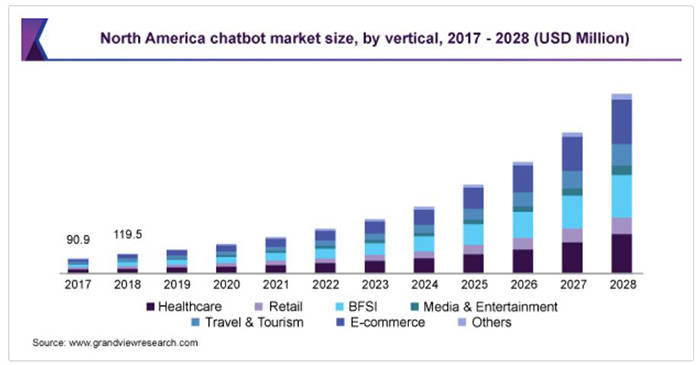
The concerns are valid though, as chatbot technology lacked in delivering accuracy despite being timely in the past. But with advancements in artificial intelligence (AI) and natural language processing (NLP), averting a no-sale crisis might be a no-brainer for the ecommerce industry.
As per Juniper, chatbots might not only make the retail and banking industry cost-effective, but also the healthcare sector, given the current health crises. We might see an increase in cost savings (a whopping $11 billion per annum by 2023) as well as a massive reduction in the time spent in procuring timely one-on-one human enquiries.
What can your brand do?
- Implement chatbot technology that converses like the next-door human customer representative. 27% of consumers prefer relying on a chatbot for easy queries but might want human reps to solve stumped situations.
- Free your customer reps of the day to day arduous struggle of replying to the same enquiries all over again. With the money saved on employing numerous customer reps, use it to implement chatbot technology in all of your brand’s dealings online – including social media as well.
- Further advancements in AI can also help you train your chatbot to deliver prospective replies in seconds instead of minutes. Your brand’s chatbot can also learn to tailor responses as per your consumer’s browsing data in order to facilitate them in their shopping experience.
2. Content Personalization
Over 89% of digital marketers rely on content personalization as one of their major tactics to win customers online. And why not? SmarterHQ found out that around 72% of shoppers prefer consulting marketing messages when they are tailored to their preferences.
According to the 7th Annual study conducted by Salesforce, around 99% of digital marketers consider content personalization as a leading bond to nurture long-lasting customer relationships.
But while content personalization is the buzz, a breach in data privacy is also a major concern for over 86% of consumers. There is always the fear of data exploitation when ‘giving too much information’ to a brand online. Over 76% of consumers are hesitant in parting with information if a brand seems invaluable and not worthy of garnering any loyalty.
You can learn from Cadbury in this regard. The milk chocolate brand matched their consumers’ personal data such as age, location and interests from their Facebook profile to deliver personalized flavours for a heartfelt experience. Well, if you are using personal data sensibly, you can too, like Cadbury, generate a 33.6% conversion rate!
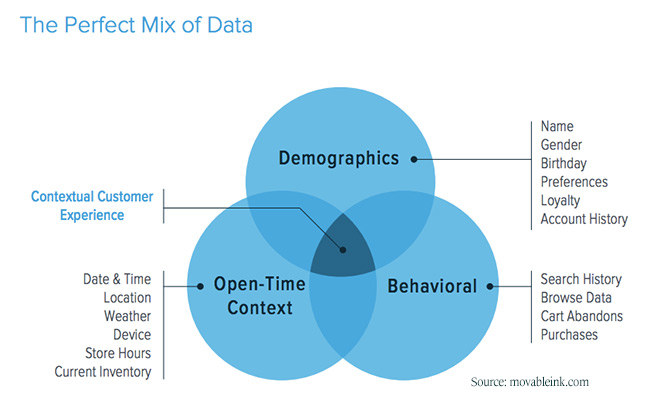
What can your brand do?
- While consumers are okay with parting with data that they believe might benefit their customer experience with a certain brand, they are concerned about their personal details slipping away.
- Over 48.3% of consumers feel ‘safe’ with imparting data to Amazon as compared to online boutique stores (7.1%) and social media companies (6.3%). As a budding e-commerce brand, growing your brand and acquiring trust should be your number one goal.
- Focus on understanding your market – Baby Boomers and Gen X are more reluctant to sign up for your newsletter, unlike 47% of millennials and Gen Z. Are you more likely to benefit from a Baby Boomer who still prefers an in-store experience to tons of millennials who prefer e-commerce websites as their go-to for shopping? Maybe both.
- Why do you think millennials trust blindly in Amazon, Apple and Google? Partly because of the fact they are huge multination conglomerates, and mainly because they believe their data is protected and used for their personal benefits.
3. E-mail Marketing
E-mail marketing was the first trend to emerge in the world of internet and digital mobilization – and it won’t be the last to exit the screen. With time, several content marketing strategies have found themselves to be on every digital marketer’s hit-list.
For many people – millennials and Gen Z alike – e-mail marketing is still one of the primary resources of receiving personalized recommendations. In 2020 alone, around 78% of marketers preferred using content personalization via e-mails in contrast to social media or mobile apps.
Instead of delivering one e-mail across the entire consumer base, marketers are now striving to tailor consumer data to make customer experiences more robust than ever before.
As per Marketo, tailored e-mails tend to get 3x the attention that single e-mail batches strive for in the first place. Interestingly, AI can help to understand customer behavior by learning about everyone’s experience as well as their preferences and e-mail activities.
What can your brand do?
- For starters, show that you care. Give a name to each of your buyer personas from the data you’ve acquired with their permission. You need to up your e-mail marketing game, and how?
- Use cookies to understand what your consumer is browsing over your website. For instance, if they spend time looking for jeans on your ecommerce website, dive deeper and learn about their preferred type and accurate size. Tailor an e-mail by sending images of selective products in their size – and offer a 10% discount to lure them in!
- Begin with a simple ‘Dear [Reader]’ to pique their interest.
- Moreover, ask them about their e-mail preferences so that you can unleash news, updates, content, and brand gimmicks tailored specifically on them. For instance, before asking a lead to subscribe to your e-mails, ask them to choose from a checklist about their e-mail preferences before spamming their inbox every time of the day. Your customer prefers camping over hiking? Cool – no need to send them updates regarding hiking gear even if it is on 50% off this Black Friday.
- Your primary focus is to see a hike in your click-through rates.
EasyJet uses content personalization to send unique e-mails to every one of their customers and visitors alike. Not only did the airline tailor 12.5 million e-mails to their customers’ personalized stories, but also saw a 25% click-through rate in response.
Check out how Bespoke Post is using AI to deliver you hyper-personalized content below.
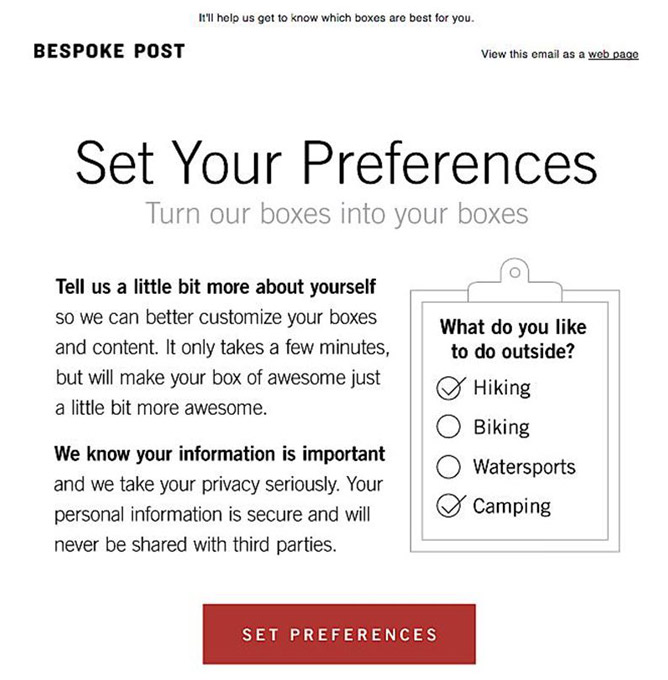
4. Video Marketing
With social media being abuzz, several marketing channels have joined the race of analyzing consumer data for better personalization and retention of customers.
People have short attention spans and high regard for audio-visual imagery. Get this – around 74% of consumers prefer watching a 10-minute video in contrast to reading a potentially scalable blog.
The whole idea behind video marketing is yet again, to build trust and show human interest content that revolved around a specific brand. Consider 61% of digital marketers for whom marketing campaigns will be empty without a video marketing strategy.
YouTube has revolutionized the whole idea behind video marketing – but try to think beyond. Think TikTok and Instagram or even Facebook live streams.
Even ecommerce brands prefer using video for their sales and marketing campaigns. From showing testimonials to contesting influencers to try and test their products, video marketing is and can be used in any business sector.
During the pandemic, video marketing became the most crucial element of any marketing campaign. With everyone stuck at home, 74% of marketers found better returns on investment with video marketing as compared to other marketing strategies. Even so, around 68% of marketers compared Google Ads to video marketing, and found a better campaign turnout with the latter!
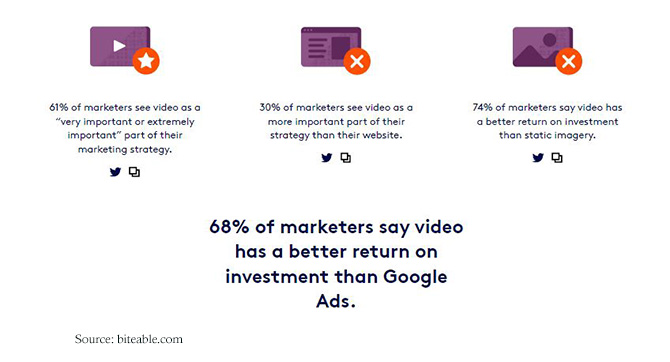
What can your brand do?
- Start by sifting through your existing blog posts and make a short video out of it. Choose from a listicle video or a narration video with images and graphics with titles that can lure a consumer’s interest (okay, clickbait). But, make sure your clickbaits are backed up by evidence.
- Make an official account on every social media channel and unleash your brand’s potential by using live streams such as Instagram’s ‘Stories’ feature. Pique your consumers’ interests by releasing short snippets of future video campaigns and throw in a few ‘behind-the-scenes’ moments to create a frenzy.
- The best part about using Instagram, Snapchat, or TikTok is that you don’t need a huge budget for making videos. Today, social apps on smartphones are used by over 38% of marketers due to their flexibility, prefer using Just pop open your phone, hit the record button and save the content to edit before posting.
- Make Q&A videos once every month so that your consumers acknowledge the efforts you are putting in to understand their concerns.
- Make a channel on YouTube and launch ‘Premieres’ to prepare your consumers for a first-hand experience of your video content. YouTube still brings most of the revenue from videos in contrast to other social media apps. Leverage your channel by launching live streams and engage with your consumers on a one-on-one basis.
- Done with videos? Launch a podcast and strip your video content with its audio for people to listen on the go.
- Better yet, use video marketing as a part of your e-mail marketing strategies as they can generate around 19% of your campaign’s click-through rate.
- Every now and then, send an alert of never-seen-before images or snippets from your videos to your consumers via unique e-mails. You can also make a short video with static imagery and narrative content for similar buyer personas.
- Many companies consider video-making an arduous deal. Take help from professional software or online tools if your budget cannot stretch for now. Consider outsourcing your video content like 17% of digital marketers today if you cannot manage or afford it in-house.
The Wind-up:
- Digital Marketing is all set to soar in the next 7 – 10 years.
- Content personalization is reshaping the way you can use consumer data to add leverage to your brand. 90% people are amiable to give their personal and behavioral data to a brand for easygoing and cheaper shopping experiences.
- Video Marketing is going to rule digital marketing like a boss, but nobody can dethrone e-mail marketing campaigns in their efficiency.
Change is integral in life – and the world of internet shows just how flexible a digital marketer’s opportunities really are.
Understanding your consumer’s mind and preferences for better ecommerce experiences is like winning hearts with the perfect recipe. Now is the time to play with different digital marketing recipes to find out which one is palatable enough.
The post-pandemic world looks crisp for the future of digital marketing. While digital marketing is making a lot of noise, we recommend plugging out your headphones so that you can keep up with the 101. I’d be lying if I told you that now would be a bad time for you to take control of the reins and get your business back on the ground!

